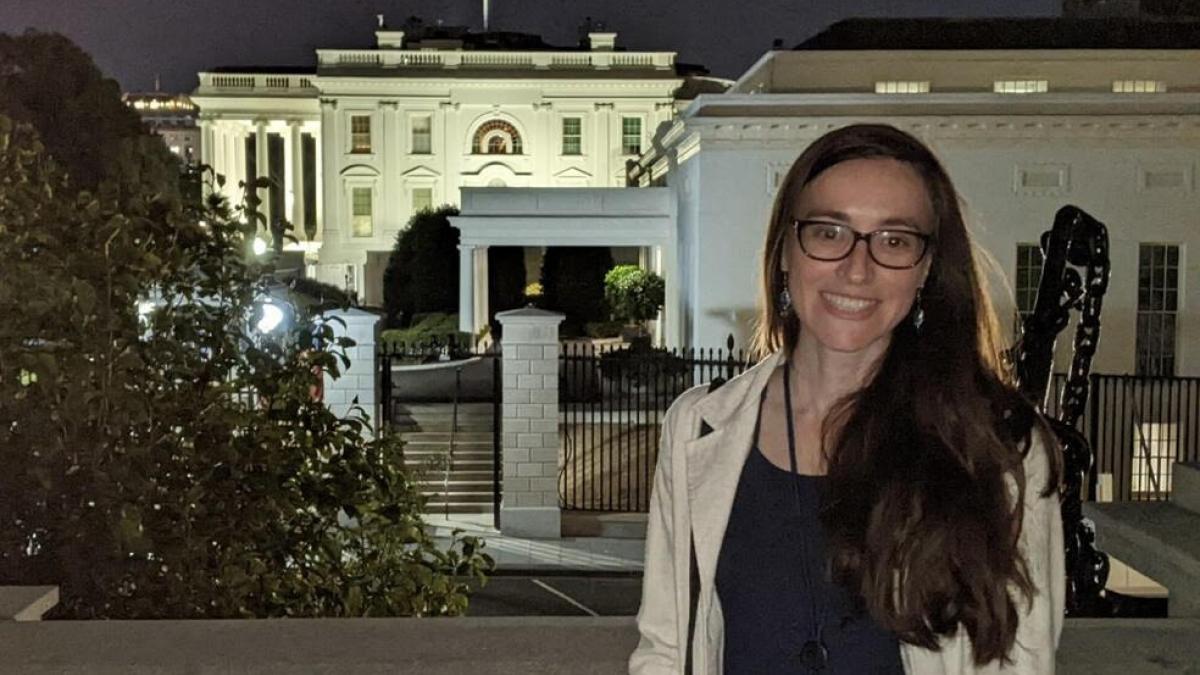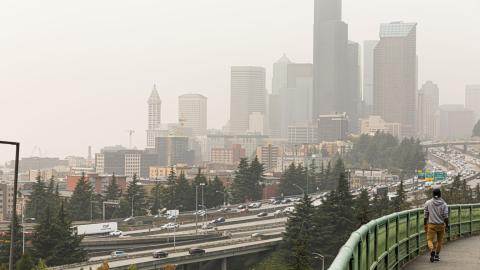For University of Washington School of Public Health alum Rachel Shaffer (MPH, ’18, PhD, ’20), the notion of public health has always been present. Her parents both worked as infectious disease epidemiologists, and living in Thailand with her family opened her eyes at an early age to the connection between the environment and human health.
In this Q&A, Shaffer, who is also an affiliate assistant professor in the UW Department of Environmental & Occupational Health Sciences (DEOHS), shares how her experiences at UW SPH helped prepare her for working at the US Environmental Protection Agency and her recent assignment with the White House Council on Environmental Quality.
Tell us the story of when you first became interested in public health.
With two parents working as infectious disease epidemiologists at the US Centers for Disease Control and Prevention, public health has always been a part of my life. The early seeds of my interest in the link between the environment and health were planted when my family lived abroad in Bangkok, Thailand, when I was a young child. In college, my interests crystallized further as I discovered the field of environmental public health, which was a natural fit for my long-standing interests in (and concern for) the environment and human health. It’s wonderful to be working in a space where I can advance policies and programs that improve both the natural world and human health.
What experiences at UW SPH have been most influential or have helped prepare you for the public health workforce?
I was able to develop the right combination of depth and breadth during my time at UW SPH. I have enormous gratitude for my PhD advisor, DEOHS and Biostatistics Professor Lianne Sheppard, who challenged me to develop key technical and quantitative skills as I dove into my dissertation topic on air pollution and dementia. Yet Lianne also gave me wonderful freedom to pursue side projects that allowed me to satisfy my curiosity about a wide variety of topics in the field and practice applying my skills across different scenarios. The work I do today requires me to apply my technical foundation and expertise to new situations on a daily or weekly basis, so I’m grateful that my training prepared me to feel comfortable in a landscape of constant new challenges.
You’ve been working at the US Environmental Protection Agency (EPA). What are you most proud of?
My work on human health assessments in the EPA Office of Research and Development’s Integrated Risk Information System (IRIS) is a critical bridge between research and policy. When we assess priority chemicals, we systematically evaluate and synthesize the evidence base (hundreds or thousands of studies) to identify the health effects associated with exposure and the levels of exposure at which those effects occur. I’m proud to be working on this important step of the research translation process; our influential assessments are used to inform policies and programs across the EPA as well as at state and local health agencies across the country.
Tell us about your recent assignment at the White House.
It’s been an incredible privilege and honor to work on advancing public health and environmental protections under the Biden-Harris Administration. I am part of the Chemical Safety and Plastic Pollution Prevention team at the Council on Environmental Quality (CEQ). This is the first time ever that CEQ, established in 1969, has had a specific team dedicated entirely to these issues, and my role is to advise on all topics related to chemical safety and human health. For example, I participate in the interagency review process for relevant federal agency regulations before they are published to ensure they align with Administration priorities on environmental public health. We also facilitate interagency coordination on key cross-cutting topics, such as per- and poly-fluoroalkyl substances (PFAS).
Adapted from the original post here.




